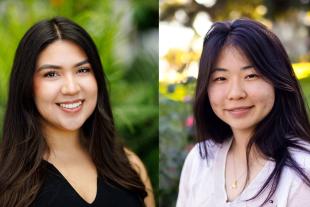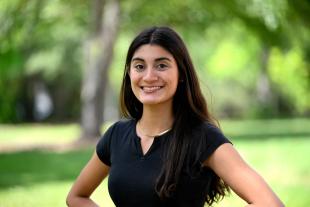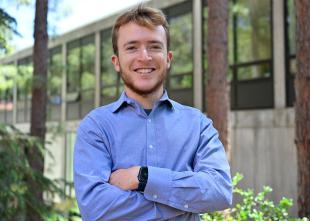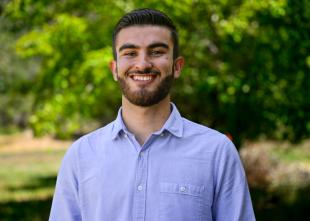Congratulations, Class of 2020! Meet Some of This Year's Outstanding Grads
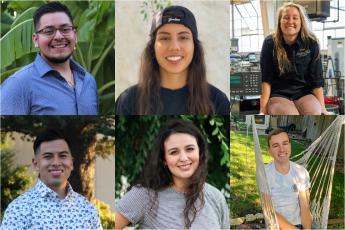
The Learn by Doing experience at Cal Poly is a recipe for graduates’ future success. With hands-on classrooms, labs and projects; supportive extracurricular opportunities; and cross-disciplinary learning aimed at enabling problem solving and innovation, Cal Poly graduates are primed to make an immediate difference in the world.
The COVID-19 pandemic has marked an unprecedented end to many Cal Poly students’ time at the university in 2020. Ongoing concerns for public safety are delaying graduates’ chances to take the stage in a traditional commencement ceremony. But this year’s graduating seniors are nonetheless prepared to embrace the next phases of their lives and careers.
“Graduation looks different this year, but the stellar quality of our graduates remains the same,” said Cal Poly President Jeffrey D. Armstrong. “We look forward to the opportunity to invite all of our Spring 2020 graduates back to campus later this year or in 2021 to celebrate their achievements. In the meantime, we know that we are sending the best and the brightest on to begin their careers or continue their educations — to meet the problems of today’s world head-on and make a tangible, positive impact in their industries and their communities.”
Meet six of Cal Poly’s Great Grads for Spring 2020.
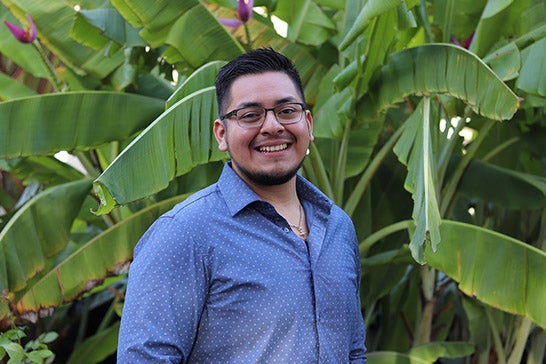 Angel Carrillo
Angel Carrillo
College of Agriculture, Food and Environmental Sciences
In mere days, Angel Carrillo will become the first in his family to graduate from college. But the agricultural sciences senior isn’t bidding the university goodbye just yet.
Carrillo, who will earn minors in fruit science and plant protection, will pursue a master’s degree at Cal Poly in agricultural education — then hopes to gain industry experience in fruit production for a few years before becoming a high school agriculture teacher.
“I have always had a passion for education and its opportunities,” Carrillo said. “I’m specifically passionate about working with students from underrepresented communities and backgrounds.”
Carrillo, who grew up in Perris, California, was involved in his high school’s Future Farmers of America (FFA) program, including public speaking contests, livestock shows, agriculture judging contests, and served in officer positions. He chose Cal Poly for the university’s excellent agricultural education program and its Learn by Doing philosophy.
“I believe hands-on teaching is the best method in learning, especially for areas such as agriculture,” he said. “In addition, I really enjoy the weather and location.”
The transition to Cal Poly had its bumps; the experience of attending college was new to him and his family, and Carrillo didn’t know what to expect.
“When I started my first year, I was a bit culture shocked. It seemed like nobody looked like me, talked like me, or even had similar experiences as me,” he said. “I was a bit intimidated and didn’t think I would really fit in. It wasn’t until I got involved and built relationships — with friends, staff and faculty whom share similar experiences or understand my position — that I began to feel comfortable and was motivated to develop a great Cal Poly experience.”
Carrillo got involved in the Latinos in Agriculture club, serving this past year as its vice president. He’s also worked as a peer mentor for the Multicultural Agriculture Program (MAP) Center; served as the 2018-19 ag council representative on the Cal Poly Crops Club; worked as a peer advisor for the College of Agriculture, Food and Environmental Sciences Advising Center; served on the Agricultural Education and Communication Department Student Advisory Council; and joined the CAFES Diversity, Equity, and Inclusion Committee as an undergraduate student member.
Carrillo said he is proud of helping to facilitate the Latinos in Agriculture club’s annual 26 Hours of Science and Technology in Agriculture event. High school students from underrepresented communities are invited to participate in agricultural Learn by Doing workshops, to get the students excited about higher education and agriculture.
“Working with high school students just reaffirms for me why I am passionate about working in education,” Carrillo said. “I plan to eventually work with students in hopes of supporting them in any way possible and motivating them to recognize their potential.”
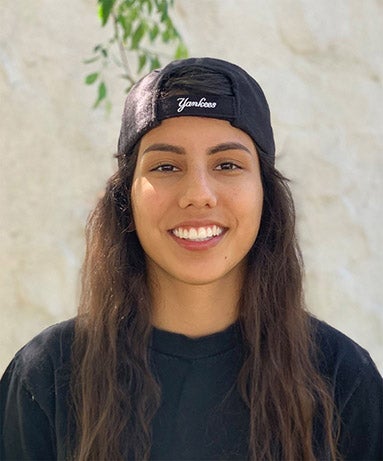 Alexis Cañas
Alexis Cañas
College of Architecture and Environmental Design
As she worked toward a degree in construction management at Cal Poly, Alexis Cañas had a guiding goal: to graduate debt-free. At 16, she started working in restaurants to support herself and her two younger siblings, in addition to keeping up with school and extracurricular activities. Her younger brother and sister became her motivation to succeed.
“Coming to college was a big financial burden on top of what I already had to take care of,” she said. “I had to work a lot to be able to afford to take care of my family and to be here.”
Cañas, of Indio, California, started studying civil engineering at UC Irvine, but after a year decided it wasn’t a good fit. She attended a local community college to help determine her career path. There, she visited the career services office and learned more about construction management.
“I saw Cal Poly had a great construction management program, and I learn best by doing. It seemed to be the right fit,” she said. “Now here I am a few years later and I couldn’t have picked a better major.”
While at Cal Poly, Cañas applied for numerous scholarships, year after year, to help pay for her education. She also worked as a server and had a few internships. Now, as she prepares to graduate, she has achieved her debt-free goal.
“I have a lot of people depending on me financially,” Cañas said. “Not having to worry about paying off student debt further enables me to take care of those I love.”
A first-generation student, Cañas said she faced challenges in trying to navigate the path to her degree.
“It’s difficult being a part of the LGBTQ community, a person of color and lower income. While it seemed everyone around me in my major and the industry that I’m seeking to work in was nearly the complete opposite,” Cañas said. “It can be hard to find people to relate to and have a support system.”
However, at Cal Poly, Cañas found professors who are deeply invested in their students. Construction management faculty member Andrew Kline helped Cañas apply to scholarships, guided her toward an internship that led to a job opportunity, and provided support and advice.
At Cal Poly, Cañas worked on the new William and Linda Frost Center for Research and Innovation as an intern with Gilbane Building Company, the construction manager for the project. A groundbreaking for the Frost Center, which will house culinary, sensory, food safety and product development labs at the heart of campus, was held in June 2019.
“Being able to say I took part in constructing a new building on campus is a great achievement to me,” she said.
Cañas plans to work for Snyder Langston, an Irvine-based commercial general contracting firm. Cañas is looking forward to finishing a project she started last summer while she was an intern at the firm, and being close to her family.
“By obtaining my degree, I hope it will encourage others in my family to pursue one as well,” she said. “I may be the first one in my family, but I know I will not be the last.
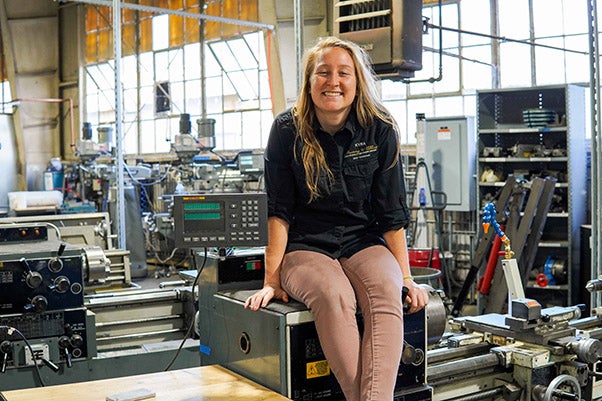 Kyra Schmidt
Kyra Schmidt
College of Engineering
Mechanical engineering senior Kyra Schmidt likes the idea of having an impact.
Her role as Cal Poly’s first female machine shop maintenance supervisor allowed her to make a difference with students and their Learn by Doing experience. She also played an active role in Cal Poly’s record-breaking Human Powered Vehicle Team.
After graduation, when she begins her new job as an electromechanical technologist at Sandia National Laboratories, she could have an even larger impact on the world, supporting the testing and evaluation of cleaner and more efficient engines to help achieve a more sustainable future.
“I will be working in the Combustion Engine Research Department, which has been on the forefront of many innovations in engine technology aimed at reducing pollution and increasing efficiency,” she said.
The Irvine, California, native came to Cal Poly for its Learn by Doing philosophy. She started as a biomedical engineering major but, after a year, changed to mechanical engineering because of its versatility and flexibility.
During her sophomore year, she became a shop technician and “fell in love with the work.” She excelled in that role and became the first female to hold the position of machine shop maintenance supervisor, fixing broken machines and performing preventative maintenance to reduce downtime, making improvements to increase ease of operation, and training new technicians to perform basic maintenance tasks. Mainly, Schmidt said, she wanted to help students find a new passion.
“I was able to make a big impact on their shop experiences from behind the scenes,” she said. “The best feeling is when you hear students say, ‘Wow, this is so cool,’ or ‘This is so helpful,’ and know that you helped make it happen!”
Last year, Schmidt served as the chassis lead, manufacturing lead, and testing lead on the Human Powered Vehicle Team, which broke the previous collegiate speed record — held for 27 years by UC Berkeley — at the annual World Human-Powered Speed Challenge in Nevada.
Cal Poly competed against teams from universities around the world, as well as amateur and professional teams, on the way to the record. “We are the fastest collegiate human powered vehicle in the U.S.,” Schmidt said. “We went 63.68 mph to break the record, so about as fast as you would drive your car on the freeway, but on a bike.”
In recognition of that achievement, Schmidt and a small group of other Cal Poly “heroes” were invited last March to the State Capitol, where they were honored by the California Assembly and Senate.
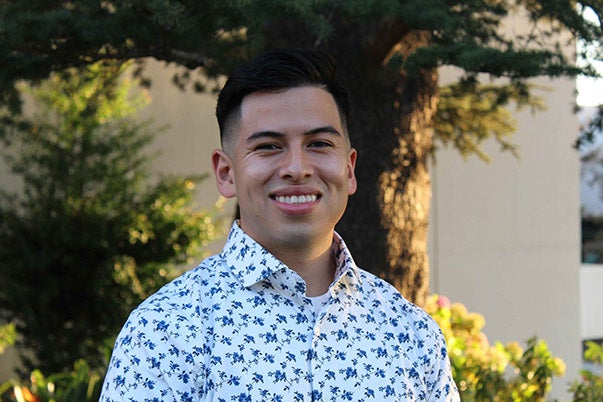 Felipe R. Garcia
Felipe R. Garcia
College of Liberal Arts
For first-generation student Felipe R. Garcia, making a difference in the long run is more important than immediate rewards. During his fourth year as an architectural engineering major, he switched gears to pursue a degree in psychology. The degree ultimately took him six years to complete, but he doesn’t regret the decision.
“I chose Cal Poly for its unique and prestigious architectural engineering program,” he said. “I stayed because I saw a need for diversity, equity and inclusion efforts.”
He changed majors so that he could give back to his community. “Mental health is stigmatized in Latinx communities; however, there are disproportionate levels of anxiety and depression due to discrimination and cultural adjustments for those who were either born in the U.S. or brought here as children. As a first-generation student, I wanted to learn more about mental health for my benefit and, more importantly, for my community.”
Garcia struggled with anxiety and depression originating from his status as a first-generation Latino student. Because of it, he said, he had difficulty maintaining good grades. He was put on academic probation and withdrew from school for a quarter, before a mentor encouraged him to take charge of his well-being and meet with a therapist.
“I found the best way to process my emotions was to become involved in diversity, equity and inclusion efforts,” he said. “I’ve supported students dealing with emotional trauma, developed students’ cultural competency, and made institutional shifts towards equity.”
Garcia also organized a fundraiser for scholarships for first-generation students. As student manager at the Cal Poly Recreation Center, he incorporated diversity competency as a hiring prerequisite. He helped create community events for underrepresented students. He presented diversity competency training topics to various campus groups. He was involved in the College of Liberal Arts Diversity Committee and the Underrepresented Student Network.
He was one of the first mentors in the Underrepresented Students Network and now trains mentors and helps provide the program with a clear direction.
As lead Intergroup Dialogues facilitator, Garcia helped students become aware of their racial and other social identities. “I aim to give underrepresented students the tools and language to address their need to feel validated for the experiences they’ve endured,” he said. “We help students from a privileged background come to terms with their privileges and move past feelings of guilt.”
Now, armed with both his degree and his experience, Garcia plans to become an academic advisor for underrepresented students.
Garcia’s family is his motivation to succeed. “I want my parents’ efforts to not be in vain,” he said. “I want my little sister to make it through college without needing to take the same route I had to take. I want to provide my family with a comfortable life. I hope to come back home to Modesto, California, with something to give them.”
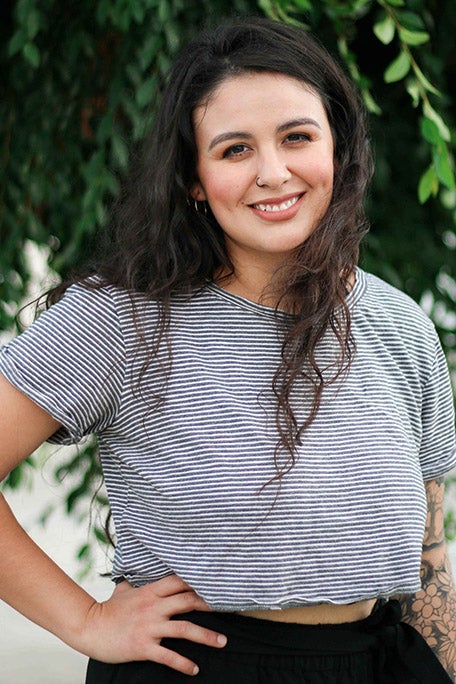 Priscilla Holguin West
Priscilla Holguin West
College of Science and Mathematics
Physics senior Priscilla Holguin West’s resume already reads like that of a seasoned professional.
She earned a Chambliss Astronomy Achievement Student Award at the American Astronomical Society meeting for exemplary research; served as a member of Harvard’s Banneker & Aztlán Institute, where she worked with renowned astrophysicist Charlie Conroy at the Harvard-Smithsonian Center for Astrophysics on his study of galactic evolution; served as president of Cal Poly’s Minorities in Physics club; co-authored a paper published in the January 2020 issue of Monthly Notices of the Royal Astronomical Society, a premiere international astronomy journal; presented summer research at the American Astronomical Society; and was accepted to the doctoral program in Astronomy at the University of New Mexico.
A transfer student of Latinx background, Holguin West grew up in Chino, California, and attended high school in Pomona. Although she maintained excellent grades and earned numerous accolades at Cal Poly, she said she struggled in the beginning.
“As a transfer student, I had to quickly shift to the pace of the quarter system from a semester system while being thrown into upper-division physics courses. I felt blindsided by the pace, curriculum and campus environment my first year.
“But the biggest challenge I’ve faced while working toward my degree has been the very stark difference between the demographics of Cal Poly and where I grew up,” she added. “As a low-income, first-generation Latina college student, I grew up in a community much different from San Luis Obispo and the backgrounds of many of my peers.”
To help cope, Holguin West co-founded Cal Poly’s Minorities in Physics club and joined a collective of Cal Poly and other students of color with similar backgrounds and life experiences.
“Finding solidarity within a group of people going through similar academic struggles that are borne from the systemic disadvantages prevalent in academia has been the greatest lesson I’ve learned when it comes to setting myself up for academic success,” she said. “I have been able to identify the support and involvement I need to have in order to perform to the best of my ability.”
She studied physics because it is a fundamental science that overlaps with other fields, such as chemistry, engineering and math. She also loves learning about space and astronomy. “It’s a system that is always changing — constantly growing. I think the fact that it is different every time we look at it — regardless of whether or not we can physically see that difference — is what makes it so unique.”
She was about to enroll at a University of California campus, when she decided to come to Cal Poly instead. “I was blown away by the hands-on curriculum, as well as how many research opportunities were available to undergraduates.”
Research is what led Holguin West to her finest accomplishment: publishing a paper she co-authored with her research advisor and mentor Professor Louise Edwards, who she’s worked with since coming to Cal Poly three years ago.
Physics Assistant Professor Laura Ríos admires Holguin West’s exceptional ability to build up those around her. “Priscilla has continuously worked on self-improvement and the mentoring of other transfer students to help ensure their success during the sometimes-difficult transition to Cal Poly,” Rios said. “We couldn’t be more proud of her.”
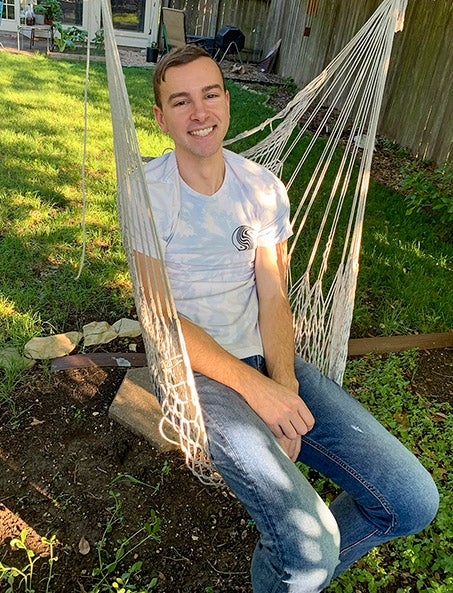 Ian Jennings
Ian Jennings
Orfalea College of Business
Ian Jennings’ career trajectory changed significantly with one decision to take a summer biology class. The Folsom, California, resident came to Cal Poly as a business administration major with a long-held dream of opening his own music recording business. This week, he’ll graduate with an eye toward medical school and a career in healthcare administration.
He hopes to work both as a doctor and in an administrative function of a hospital, and plans to apply to combined M.D.-MBA programs.
“I want to become something of a liaison for doctors and administration,” he explained. “I would derive credibility by utilizing my business degree and medical education to represent medical interests more completely in hospital administration. I hope that by marrying the two disciplines, I can enact some real positive change.”
Jennings came to Cal Poly as a transfer student after completing an associate degree in business administration at Cuesta College.
“Cal Poly was the obvious choice, given that the school focused on practical application, valued actual teaching skills over research and was cheaper than UC,” he said. “My business education has been nothing short of extraordinary and exceedingly useful in my professional education.”
As he worked toward his degree — earning perfect grades for seven out of nine quarters to date — Jennings also taught himself sound design and took extra classes at Cuesta to become certified as an audio engineer. But the more he pursued his interested in the live music industry, the more disillusioned he became with its climate.
“I became primarily concerned with the happiness you get from a meaningful career,” Jennings said. “Out of all the people I met that worked live music events, the medics that took care of health emergencies were making the biggest difference in my eyes. I also made a friend in the healthcare industry that started to show me how rewarding the field can be.”
Jennings took a biology class, as a test to see if he could excel in a field more intrinsically scientific. He did well and started taking more science classes while volunteering at French Hospital Medical Center and shadowing doctors to learn about the field. He got into assistant professor Jean Davidson’s popular research lab and became the student leader of an industry-funded microbiome project related to the recent Listeria outbreak that pulled romaine lettuce from produce shelves.
Jennings spent an extra year at Cal Poly to take all of the medical school prerequisite courses, and applied for enough scholarships and grants to cover his tuition for the extra time. After graduation, he’ll take the Medical College Admission Test, and then send off applications to medical school.
“I love how my choice of business has evolved since I originally chose it,” Jennings said. “I find this degree to be the Swiss army knife of undergraduate education. I’m a management and HR concentration, so my education focuses entirely on how people work with each other professionally.”
This spring, 4,899 students are eligible to graduate from Cal Poly’s six colleges:
- College of Agriculture, Food and Environmental Sciences: 859
- College of Architecture and Environmental Design: 403
- Orfalea College of Business: 828
- College of Engineering: 1,312
- College of Liberal Arts: 862
- College of Science and Mathematics: 635

